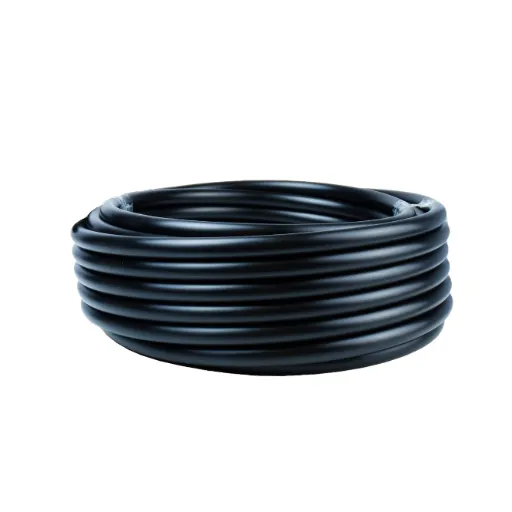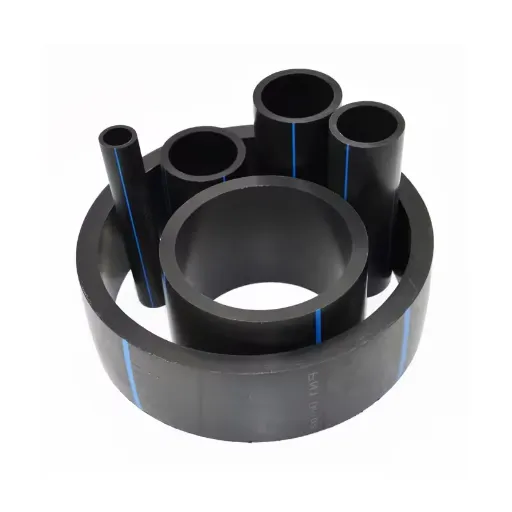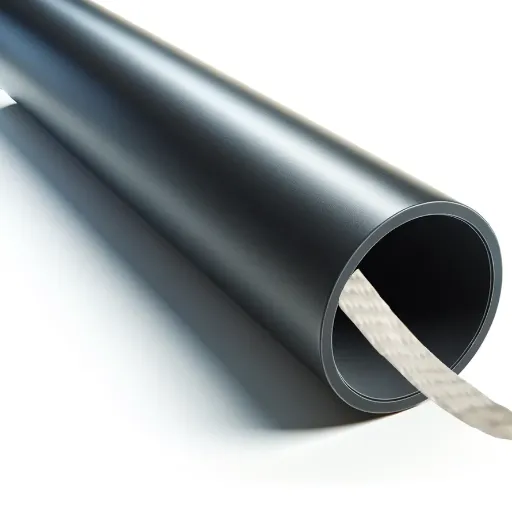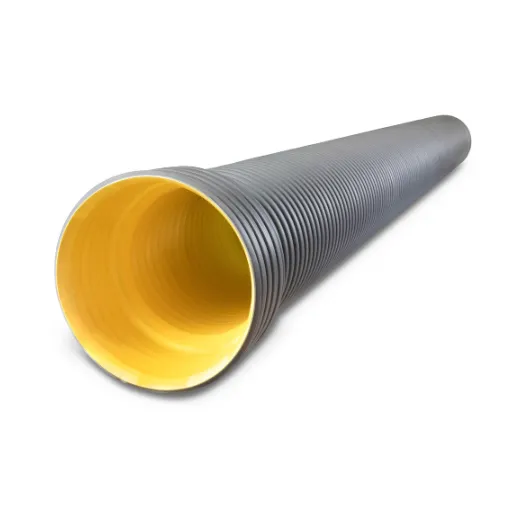High-Density Polyethylene (HDPE) pipes have made great strides in the area of modern piping solutions with their remarkable durability, flexibility, and efficiency. Amongst the diverse range of choices available, the 10-inch HDPE pipe is a good selection for a lot of different applications, from water distribution to industrial uses. But what really differentiates it from other materials and sizes? This guide will take you through all the important aspects of 10-inch HDPE pipes—specifying their core features, walkthrough installation steps, and the amazing advantages that have been attached to each project. Whether you are a contractor, engineer, or just interested in innovative piping solutions, this article will give you a lot of valuable insights that will help you to make your decisions wisely.
Product Overview
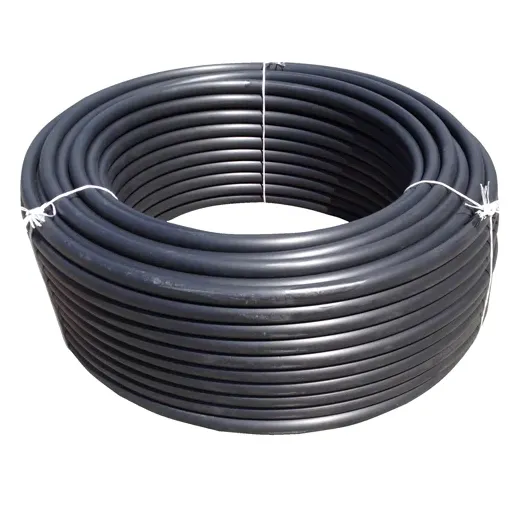
What is a 10 Inch HDPE Pipe?
The 10-inch HDPE pipe, made of High-Density Polyethylene, is not only a durable but also a lightweight piping solution that can transport water, gas, and other fluids or materials efficiently. HDPE, which is a thermoplastic material, has an incredible strength-to-density ratio, thereby providing excellent resistance to corrosion, impact, and chemical exposure, which makes it suitable for various applications in construction, agriculture, and industrial projects.
The diameter of this specific pipe is 10 inches, which signifies its nominal outside dimension, and that is capable of handling medium to high volume flow needs. The production of these pipes adheres to the industry standards thus providing uniformity of dimensions and performance. They find their place in different systems such as pressure and non-pressure ones, for example, water mains, sewer lines, and irrigation systems. The HDPE flexibility means that it can be installed even on rough terrains with major soil and surface issues.
One more argument in favor of 10-inch HDPE pipes is their impressive life-span and low maintenance costs. With a service life ranging from 50 to 100 years depending on the operating conditions, these pipes are definitely a cost-effective solution for both temporary and permanent piping systems. Besides, they are environment-friendly since HDPE is recyclable and the production of such pipes consumes less energy than the production of other materials like metal or PVC.
Key Features of HDPE Pipes
High-density polyethylene (HDPE) pipes have gained widespread acceptance due to their durability, flexibility, and range of applications. One of the main characteristics is that they are resistant to corrosion and chemicals, which in turn means their lifespan will be considerably prolonged, even in extreme conditions of their usage. It is a well-known fact that HDPE pipes do not rust, rot, or otherwise deteriorate when subjected to moisture, chemical substances, or extreme temperature variations, unlike metal pipes.
In addition, HDPE pipes possess an exceptional combination of strength and lightweight properties that can be termed as one of their most significant features. This characteristic makes their transportation and installation much easier, hence cutting down on labor and logistics costs. Their inherent flexibility enables them to adapt to different situations and perform well even in regions with ground movement or seismic activity.
The reliability of HDPE pipes is further enhanced by their leak-proof performance through the use of heat-fused joints. This fusion technique creates a joint that is almost nonexistent, thus preventing leaks and improving the overall efficiency of fluid transport systems. The consistency in performance has a positive impact on water loss reduction, thereby making the application more sustainable in the case of water distribution, irrigation, and industrial processes.
Common Applications for 10 Inch HDPE Pipes
Water Distribution Systems
Municipal water supply systems are highly dependent on 10-inch HDPE pipes as they are very durable, and the joints are leak-proof. Moreover, their resistance to corrosion contributes to the long service life of the pipes, subsequently making them suitable for transporting drinking water. For instance, HDPE pipes have a maximum pressure handling capacity of 250 psi, therefore, they are trustworthy for both urban and rural water networks.
Irrigation Systems in Agriculture
One of the major applications of these pipes is in agricultural irrigation systems where water is conveyed to plants in an efficient way. The pipes being flexible can easily be laid down regardless of the topography, plus their strength to withstand UV rays and chemicals gives them a long life. Such trait not only helps in water conservation but also aids in the promotion of eco-friendly agricultural practices.
Industrial Fluid Transportation
Ten-inch HDPE pipes are most favoured by industries for the transport of chemicals, waste, and hot fluids. The pipe’s chemically inert and sturdy nature can endure rough chemicals and high pressure, consequently, they become the pillar of support for the mining, oil, and chemical production industries.
Sewage and Drainage Systems
In the sewer and drainage realm, HDPE pipes often come to the fore due to their non-corrosive nature, and the smoothness of the interior walls which plays a dual role of cutting down on blockages while also promoting efficient flow. They have been constructed to take heavy loads and withstand ground movements which makes them very appropriate for urban infrastructure.
Temporary Water Supply for Events and Emergencies
Event or emergency situations like disaster relief where temporary water supply is needed, 10-inch HDPE pipes are at the front line due to being light in weight and easy to set up. They can be installed and removed in no time thus being a dependable solution during critical periods.
The above mentioned application areas are the unmistakable proof of the capability and flexibility of 10-inch HDPE pipes in numerous industries and scenarios.
Installation Methods
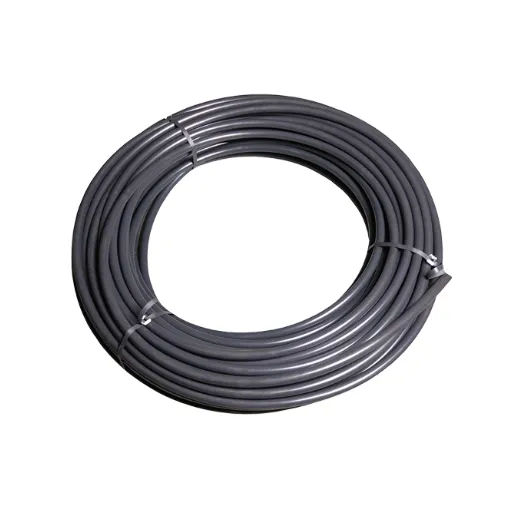
Preparing for Installation
To guarantee the efficient installation of 10-inch HDPE pipes and the reduction of possible issues to a minimum, it is vital that proper preparation is done in advance. First of all, a very thorough site assessment should be carried out to find out the location of any obstacles, the terrain conditions, and the materials needed. Secondly, pipe specifications should be double-checked, thus making sure that they are suitable for the project’s needs regarding pressure ratings and environmental factors, among others.
Trenching is one of the main processes and it requires very accurate measurements for depth and width based on the pipe size and the local standards. For the best stability, the trench bed should be prepared using sand or soft soil as bedding and should be clean and smooth. The careful handling during placing is very important because it will be the main reason pipe walls will not suffer from unnecessary stress or, even worse, damage. The jointing methods like butt fusion or electrofusion must follow the manufacturer’s guidelines so that a strong and leak-proof connection is formed.
Testing should be done at the end of the installation to check the system’s integrity. The common methods used hydrostatic or pneumatic pressure tests for identifying leaks or weaknesses. Proper preparation plus detailed planning will ensure the establishment of a long-lasting and efficient HDPE pipe system.
Step-by-Step Installation Guide
- Site Preparation
Start with ensuring that the installation site is free from any debris or obstacles. The trench should be dug according to the design and specifications, keeping the right width and depth to fit the pipe diameter and backfill material needed.
- Inspection of Materials
Inspect the entire shipment of HDPE pipes and fittings when they arrive at the site. Check for any visible defects like scratches, gouges, or cracks that could affect the system’s performance. Only unblemished materials are to be used.
- Pipe Storage and Handling
Pipes should be kept on a surface that is clean and flat, away from harmful chemicals or sunlight if for long periods. Use the correct lifting equipment during the handling process to avoid bending, kinking, or any other type of physical damage.
- Pipe Alignment and Preparation
Pipes should be aligned very carefully along the trench. Before pipes are joined, thoroughly clean their ends to get rid of any dirt, grease, or moisture that could weaken the joint. A pipe cutter or any other suitable tool should be used to make sure ends are straight and have no burrs.
- Joining Pipes
Proceed with the approved jointing method, like butt fusion or electrofusion, according to the project specifications. Jointing equipment should be calibrated and operated according to the manufacturer’s guidelines. After fusion, let the joint cool for a sufficient amount of time to develop maximum joint strength.
- Placement in Trench
The pipes that have been joined should be carefully lowered into the trench, and the alignment maintained. The use of padded or appropriate supports is recommended to avoid any damage during this operation. Make sure the bedding for the pipe gives uniform support the entire length.
- Testing for Integrity
Before backfilling, hydrostatic or pneumatic pressure testing should be carried out to confirm the integrity of the system. Conform to the industry standards regarding testing procedures and very closely observe the pressure levels applied during the testing for leak or fault detection.
- Backfilling
Use firstly, clean and well-graded material for backfilling in order to provide stability and protect the pipe. Secondly, avoid using sharp or large objects that can possibly damage the pipe wall. Thirdly, backfill in layers, thoroughly compacting each layer to prevent settling.
- Final Inspection
A thorough inspection of the system installed should be done to make sure it meets the design specifications. Keep records of the installation process for future reference that include test results and materials used.
If you stick to this methodical procedure, while also following the latest industry standards and best practices, you will have a dependable and long-lasting HDPE pipe system. The use of these techniques not only reduces the possibility of failure in the system but also aids in the transportation of fluids or materials over time without interruption.
Common Installation Challenges and Solutions
Although the installation process of HDPE pipes is very effective, at the same time, it may cause different issues that have to be properly handled before the system performance can be relied on for the long term. In the following, there are some typical installation problems together with the effective methods of their solution:
Improper Trench Preparation
Trench preparation not done properly is one of the major causes of the installation problems. This may result in pipes being either misaligned or damaged. To avoid this problem, see to it that the trenches are excavated correctly and uniformly bedded. Granular materials that are well-graded will be used to support the pipe evenly and thus, concentration of stress will be reduced.
Thermal Expansion and Contraction
Pipes made of HDPE are liable to thermal expansion and contraction as a result of temperature changes. Not taking this into account during installation can lead to the creation of joint stress or warping of the pipe. Expansion loops should be incorporated or adequate clearance allowed for movement when the pipes are being secured.
Fusion Joint Integrity
The reliability of a system is highly dependent on the strength of fusion joints but improper heating or alignment during the welding process can weaken the joint. Always use calibrated fusion equipment and be very strict when following the guidelines of the manufacturer, ensuring that you set the proper temperature and pressure.
Damage During Handling and Storage
HDPE pipes can be dented, gouged, or suffer UV degradation when stored and handled improperly. Do not let stored pipes be exposed to the sun directly, use proper lifting equipment, and check for damage before installation.
Resistance to External Loads
The soil that is surrounding buried HDPE pipes must be compacted properly; otherwise, the pipes will be deformed due to the pressure exerted by heavy loads on the surface. Proper backfill compaction should be carried out and in places where this is not possible, encasement solutions such as concrete slabs should be used to distribute the weight.
If these challenges are dealt with in an active way and if site-specific considerations are incorporated then the performance and lifespan of the HDPE pipe systems will be greatly enhanced. Furthermore, the incorporation of the latest installation techniques along with the strict adherence to the industry standards will guarantee the reliability and efficiency of the system.
Product Pricing and Options
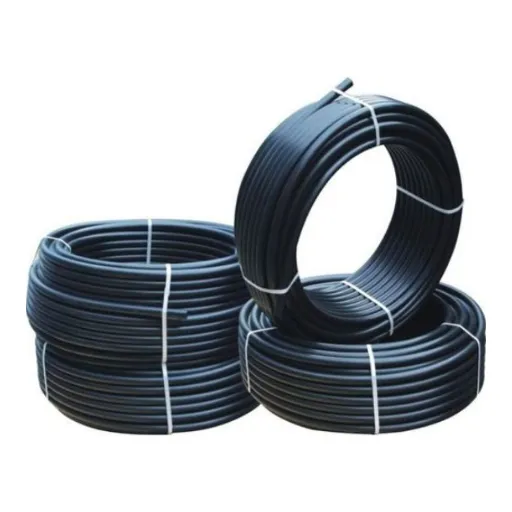
Factors Influencing HDPE Pipe Price
А pricing for HDPE pipes is dependent on various aspects that show the characteristics of the material and the market conditions at the same time. The main factors are:
- Raw Material Costs: The cost of polyethylene resin that is a main ingredient in HDPE pipes is greatly affected by the worldwide prices of oil and gas. Movements in the crude oil markets regularly result in a corresponding change in raw material prices.
- Pipe Specifications: Factors like diameter, wall thickness and pressure rating are very influential in determining the price. The pipes with larger diameters and higher pressure ratings necessitate more raw material and more sophisticated manufacturing process respectively, and hence, the price is higher.
- Manufacturing Processes: The advanced production methods and the quality assurance may lead to an increase in the price of the product. Pipes that are made with higher accuracy or that comply with special quality standards, such as ISO or ASTM certifications, tend to be more expensive.
- Supply and Demand: The pricing may be pushed up or down by the market forces considering the regional availability and the demand for infrastructure projects. The prices might go up during the times of high demand which is often caused by big projects like urban water systems or industrial developments.
- Transportation and Logistics: Shipping and handling costs for HDPE pipes can be very high due to their large size and volume. The nearness of the customer to the manufacturer and the efficiency of the logistics directly affect the final price.
- Additives or Modifications: Customization such as UV protection, increased flexibility or anti-corrosive coatings might be charged extra. These changes increase pipe strength and functioning but they are costly.
The amalgamation of these factors with the recent market analyses and the current industry trends can lead to the establishment of accurate pricing models. This broad understanding makes it easier for the companies to select the best HDPE pipe solutions for their projects after making the informed decisions.
Factors Influencing 10 Inch HDPE Pipe Prices
When you compare prices for 10-inch HDPE pipes, it is very important to take into account a lot of things that might have a huge effect on the total cost. The material grade is one of the most important factors; the higher-grade materials which are meant to last long and perform well usually cost more. Moreover, the project-specific requirements of customization options like UV resistance, increased flexibility, or chemical resistance can also affect the pricing.
Another factor that has a lot of influence in this case is the market. Availability of raw materials, transportation costs, demand in different regions, and local competition are some of the supply chain factors that have a direct impact on the pricing trends. As a result, the differences in price can be quite noticeable across different geographical areas.
Buying in bulk most of the time lowers the per-unit price and thus it is a good option for a budget-friendly plan in case of bigger projects. By assessing all these factors and making use of the latest insights, businesses can pick the most appropriate and cost-friendly HDPE pipe solutions for them.
Benefits of Using 10 Inch HDPE Pipes
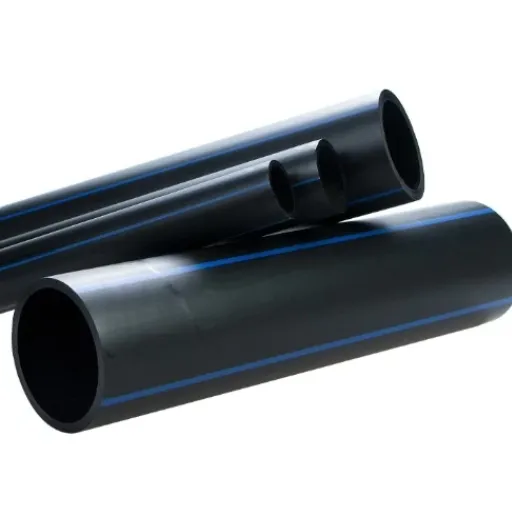
Durability and Longevity
Corrosion Resistance
The resistance that HDPE pipes possess to corrosion, rot, and chemical degradation leads to a notable increase in their lifespan in places where the corrosive substances are present frequently.
High Impact Strength
The pipes demonstrate the outstanding resistance to impact and pressure; thus, they do not crack or break even when the force applied is sudden and strong.
Flexibility and Stress Crack Resistance
Ground movements and external loads are challenges that HDPE pipes can confront because they are flexible, and the composition of their material provides for the prevention of stress cracking over time.
UV Resistance
The HDPE pipes are made in such a way that they can resist the effects of ultraviolet radiation, and thus, the sunlight that is the source of the radiation does not pose any risk of weakening or deteriorating the pipes’ structure.
Long Lifespan
When installed and maintained properly, the HDPE pipes can last for more than 50 years, which makes them a very economical solution for the long-term infrastructure project costs.
Resistance to Corrosion and Chemicals
Corrosion Resistance
Due to the fact that they are not susceptible to rust, scaling, or pitting, as opposed to metal pipes, HDPE pipes are very much suitable for transferring water and other fluids.
Chemical Resistance
The lifetime of an HDPE pipe is not affected by the exposure to acidic and alkaline solutions, or any of the chemicals, both organic and inorganic.
Abrasion Resistance
The material composition of the HDPE pipes is such that it lends them the ability to resist abrasion and thus prolong their use in the harshest of environments.
Resistance to Hydrocarbons
The very fact that HDPE pipes are resistant to hydrocarbons, encompassing oils and gases, plus the aforementioned features, makes them a perfect fit for the petrochemical industry.
Resistance to Chlorides and Sulfates
Besides being a reliable performer over time, HDPE pipes also effectively ward off chemicals like chlorides and sulfates that are normally present in wastewater and industrial effluents.
Environmental Benefits of HDPE
High-density polyethylene (HDPE) pipes have the best characteristics along with being eco-friendly. Five essential environmental advantages of HDPE pipes are discussed below:
- ♻️ Recyclability
HDPE is fully recyclable (100%), and this enables the re-processing of the used materials into new products, thus decreasing the amount of waste and supporting the circular economy. - 🌍 Lower Carbon Footprint
The use and movement of the pipes made of HDPE require less energy than those made of conventional materials; hence the carbon footprint is also lesser. - ⏳ Long Lifespan
Though in certain cases the service life can go up to 100 years, the HDPE pipe, therefore, as a resource, makes the environmental impact of frequent replacements less, thus saving resources. - 💧 Reduced Leakage
The excellent and seamless joints of the HDPE pipes prevent leakage which, in turn, helps to save water and soil contamination as well. - 🚚 Lightweight and Efficient Transportation
The lightweight HDPE pipes consume less fuel thus resulting in lower greenhouse gas emissions during transit.
These advantages render HDPE as a sustainable and eco-friendly material for the new piping systems.
Similar Products and Alternatives
Comparison with Other Pipe Materials
HDPE pipes can be compared to or graded on the qualities and metrics of durability, flexibility, cost, and environmental eco-friendliness when pitted against PVC, steel, and concrete as competitors.
| Aspect | HDPE | PVC | Steel | Concrete |
|---|---|---|---|---|
| Strength | High | Moderate | High | High |
| Flexibility | Excellent | Limited | Rigid | None |
| Expense | Medium | Low | High | Medium |
| Rust Proof | Yes | Yes | No | No |
| Setup Ease | Simple | Moderate | Complex | Complex |
| Longevity | 50+ years | 20-50 years | 50+ years | 50+ years |
| Eco Impact | Low | Moderate | High | High |
Alternative Sizes and Types of HDPE Pipes
HDPE pipes, due to their very nature, are widely available in different sizes and types, which makes them very convenient for a multitude of uses. Their diameters can be found from as minuscule as 1/2-inch to more than 63 inches, thus meeting the requirements of both household and industrial applications on a large scale. Besides, HDPE pipes come with various pressure rating classes (PN ratings), including PN6, PN10, PN16, etc., which will depend on the company’s choice of the highest-rated pipe, facilitating the aspect of fluid or water pressure control.
In addition to the standard sizes, specialized HDPE pipes such as corrugated HDPE pipes are made to last longer and be more flexible; thus, they are perfect for drainage and stormwater management. Another choice is structured wall HDPE pipes that are strong but still very light, which makes them suitable for developing large infrastructure projects. With industry practices improving, today’s HDPE pipes are also made with multiple layers to enhance their properties like the inner layers that are resistant to chemical corrosion or UV radiation.
With their different prices, these HDPE pipes can be versatile and each project’s specific demand can be met. This means that in the case of various industries, such as agriculture, construction, and water management, there is a guarantee of performance reliability.
Choosing the Right Pipe for Your Project
Identifying the specific requirements of the application is always my starting point when selecting the pipe suitable for the project. Understanding the type of material that will be transported, the pressure at which it will be operated, temperature conditions, and the environment around the pipe are some of the factors that need to be taken into account. For example, if the project is about the transport of potable water, I would choose HDPE pipes which are eco-friendly and are full-fledged with the safe water distribution industry’s standards.
After that, I look into the size and type of pipe that would be the best fit for the project. HDPE pipes have a wide range of diameters, as well as different pressure ratings, so I make sure that the pipe selected can bear the estimated load effectively. I also consider the requirements for special features, for example, UV-resistance for outdoor installations or chemical-resistant inner layers in case of projects involving aggressive substances. This customized strategy not only conserves resources but also ensures the pipes last longer.
The last aspect considered is the installation and long-term maintenance involved. HDPE pipes weigh less and are more flexible, which means handling is easier, and labor costs during installation also go down. Besides that, I also assess the existing systems’ compatibility and the upgrading potential in the future. Through a careful assessment, I am able to select a pipe solution that guarantees not only the project’s success but also its longevity.
References
- Durability and Reliability of Large Diameter HDPE Pipe
This document discusses the thermal expansion and other properties of HDPE pipes. - Pre-Insulated Piping Guidelines
Includes details on pipe sizes and wall thickness for various applications. - The Effect of High-Density Polyethylene (HDPE) Pipe Profile
A study on the performance and resistance of HDPE pipes under various conditions.
Frequently Asked Questions (FAQ)
Q: What is the application for a 10 inch HDPE pipe?
A: The application of a 10 inch HDPE pipe is mainly seen in the irrigation and water supply industries. This pipe can also be used in agricultural projects, drainage systems, and water distribution networks because it can handle large volumes of water due to its substantial flow capacity.
Q: What are the ingredients of a 10 inch HDPE pipe?
A: Heavily relying on the polyethylene, the 10 inch HDPE pipe is made up of a mixture that includes the most excellent toughness, resistance to corrosion, and durability traits. This material not only guarantees the pipe’s longevity in being able to endure extreme environmental conditions but also ensures the pipe maintains its efficiency through time.
Q: Which method is employed for the installation of a 10 inch HDPE pipe?
A: The process of the installation of a 10 inch HDPE pipe includes trenching to bury the pipe at the specified depth. Pipe fusion is the method combined the two ends of the pipe by melting them together, ensuring a strong and leak-proof union. The time of installation and operation can fluctuate with the size and complexity of the project.
Q: What are the pros of 10 inch HDPE pipe compared to PVC?
A: Toughness and impact resistance are two areas where PVC cannot match the 10 inch HDPE pipe; thus, the latter becomes durable and more resilient for a variety of applications. On top of that, HDPE pipes are less prone to bursting due to pressure and can manage a broader range of temperatures, thus making them appropriate for various areas.
Q: What are the costs related to a 10 inch HDPE pipe?
A: The cost of the 10 inch HDPE pipe can differ depending on the manufacturer, the place, and the demand of the market among others. However, it is a good practice to not only factor in the expenditure at the beginning but also the costs incurred during the installation, flow, maintenance, and lifespan of the pipeline.
Q: Do you need special fittings for 10 inch HDPE pipes?
A: Yes, the specific fittings are necessary when working with a 10 inch HDPE pipe in order to make sure the connections are done well and the water can flow there. The fittings fit perfectly into the pipe’s outer diameter and hold great importance in the building of a reliable irrigation system or drainage pipe network.
Q: Is it permissible to use a 10 inch HDPE pipe in gardens and greenhouses?
A: Absolutely, not only can a 10 inch HDPE pipe be used in gardens and greenhouses, but it is also frequently used as an irrigation pipe in such places. The pipe’s smooth internal surface acts as a conduit for water flow and this greatly lowers the chances of clogging and at the same time guarantees that plants are getting the right amount of water.
Q: What types of a 10 inch HDPE pipe performance characteristics are there?
A: The performance characteristics of a 10 inch HDPE pipe comprise, among others, outstanding strength, and flexibility, and very high resistance to corrosion. These traits enable the pipe to be used in a variety of applications being a long-lasting and low-maintenance option.



